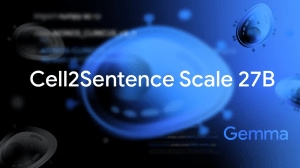Edward Teller: Father of H-bomb, Star Wars dead
Edward Teller, the brilliant, bushy-browed physicist who came to deplore his designation as the father of both the hydrogen bomb and the con...

Edward Teller, the brilliant, bushy-browed physicist who came to deplore his designation as the father of both the hydrogen bomb and the controversial ‘‘Star Wars’’ nuclear defence system, died of complications from a stroke on Tuesday at his home on the campus of Stanford University. He was 95.
Teller died on the day he was scheduled to appear at a dedication ceremony for the University of California’s new Edward Teller Education Centre, near Livermore National Laboratory. ‘‘The loss of Dr Edward Teller is a great loss for this laboratory and for the nation,’’ said Michael Anastasio, director of the laboratory. ‘‘He was an advocate for science and development of Lawrence Livermore National Lab.’’
Associate director emeritus of Lawrence Livermore and senior research fellow at the Hoover Institution at Stanford until his death, Teller despised the ‘‘father’’ sobriquets. He once refused to proceed with a debate until he was assured that he would not be introduced as ‘‘father of anything.’’
In a rare interview in 1988, Teller called the labels ‘‘ridiculous’’ and spluttered: ‘‘For heaven’s sake, I am not! I am the father of two children. Will you please avoid this father thing?’’ That may have been his longest public statement about this private man’s family: He is survived by a son, Paul and a daughter, Wendy. His wife of 66 years, Augusta Maria Harkanyi (known as Mici), died in 2000.
If his personal life was quiet, publicly he was the most political of scientists. He was openly obsessed with nuclear power as the source of good for energy and defensive weapons.
Teller was born on January 15, 1908, in Budapest, Hungary, to a Jewish family. Earning his Ph.D. degree in theoretical physics in 1930, at the age of 22, from University of Leipzig, Teller wrote his doctoral thesis on the theory of hydrogen molecular ion. That formed the basis of his work on the theory of molecule, still the most commonly accepted description.
In 1941, the year he became a US citizen, Teller was recruited to work on the Manhattan Project that created the atomic bomb. One declassified account of the project, by Hans Bethe, wartime Los Alamos director of the theoretical division, has said that work proceeded on a fusion-type in the post-war period but had been hampered by Teller’s ‘‘very incomplete’’ or faulty calculations. By 1951, Teller had overcome a research problem by determining that X-rays could ignite the bomb’s fuel. The first hydrogen bomb was exploded at Eniwetok on November 1, 1952. — LAT-WP





- 01
- 02
- 03
- 04
- 05

























